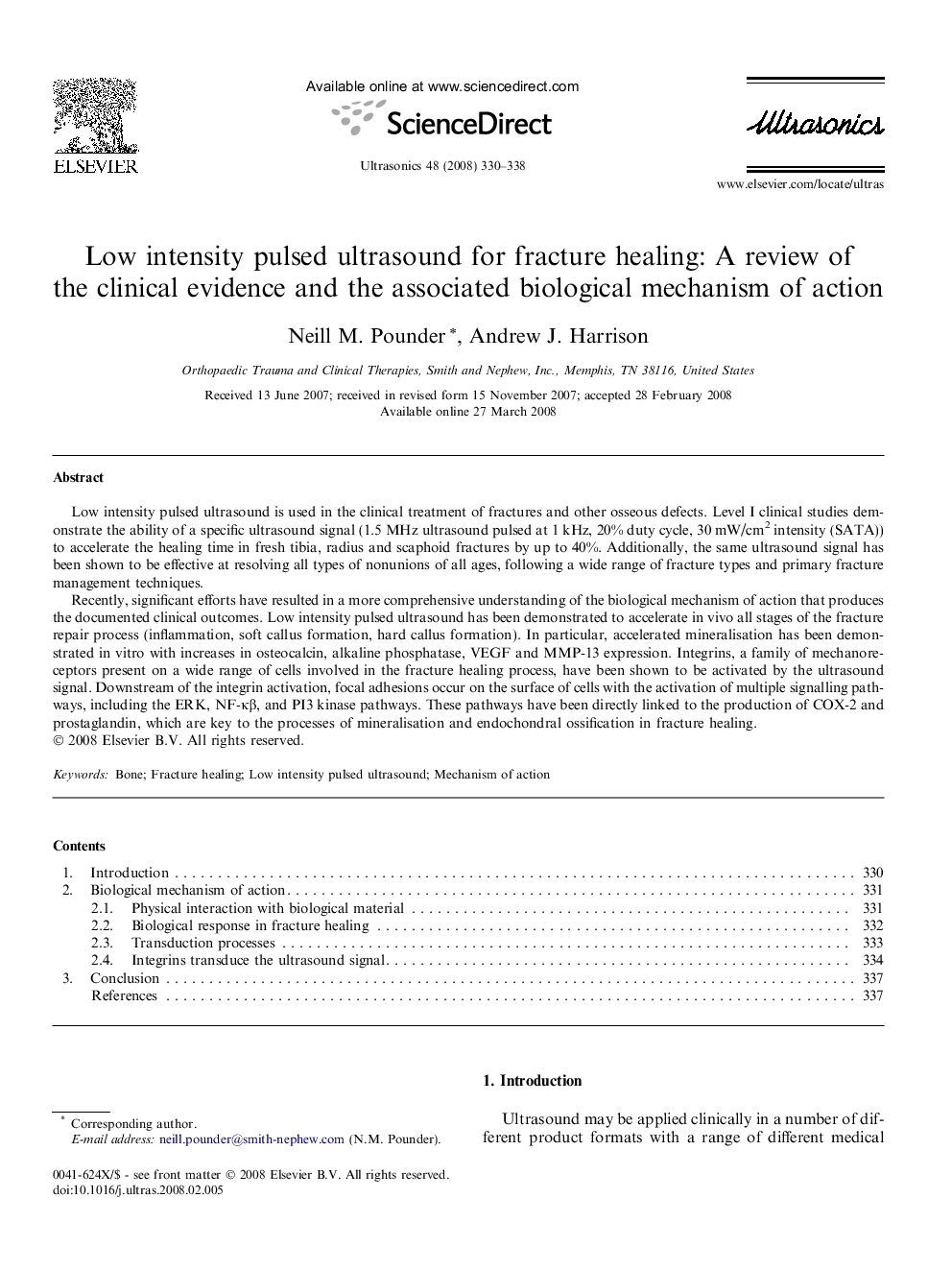| Article ID | Journal | Published Year | Pages | File Type |
|---|---|---|---|---|
| 1759784 | Ultrasonics | 2008 | 9 Pages |
Low intensity pulsed ultrasound is used in the clinical treatment of fractures and other osseous defects. Level I clinical studies demonstrate the ability of a specific ultrasound signal (1.5 MHz ultrasound pulsed at 1 kHz, 20% duty cycle, 30 mW/cm2 intensity (SATA)) to accelerate the healing time in fresh tibia, radius and scaphoid fractures by up to 40%. Additionally, the same ultrasound signal has been shown to be effective at resolving all types of nonunions of all ages, following a wide range of fracture types and primary fracture management techniques.Recently, significant efforts have resulted in a more comprehensive understanding of the biological mechanism of action that produces the documented clinical outcomes. Low intensity pulsed ultrasound has been demonstrated to accelerate in vivo all stages of the fracture repair process (inflammation, soft callus formation, hard callus formation). In particular, accelerated mineralisation has been demonstrated in vitro with increases in osteocalcin, alkaline phosphatase, VEGF and MMP-13 expression. Integrins, a family of mechanoreceptors present on a wide range of cells involved in the fracture healing process, have been shown to be activated by the ultrasound signal. Downstream of the integrin activation, focal adhesions occur on the surface of cells with the activation of multiple signalling pathways, including the ERK, NF-κβ, and PI3 kinase pathways. These pathways have been directly linked to the production of COX-2 and prostaglandin, which are key to the processes of mineralisation and endochondral ossification in fracture healing.
